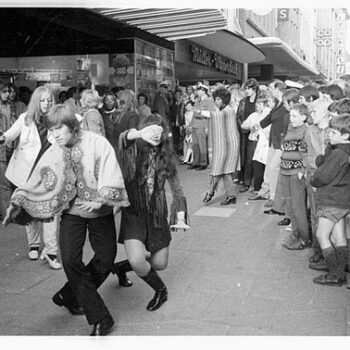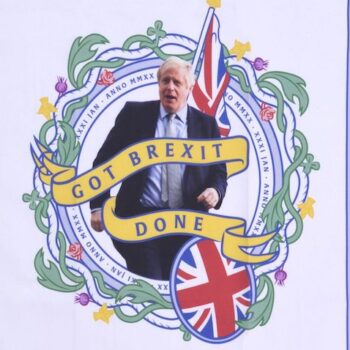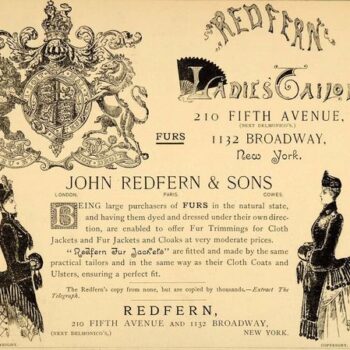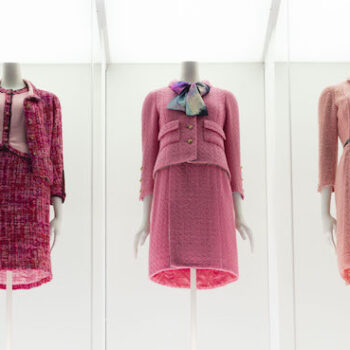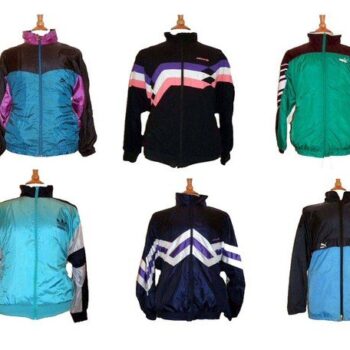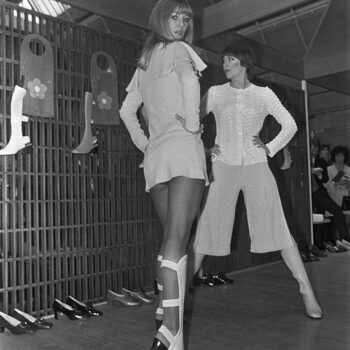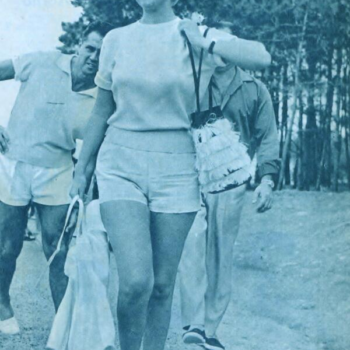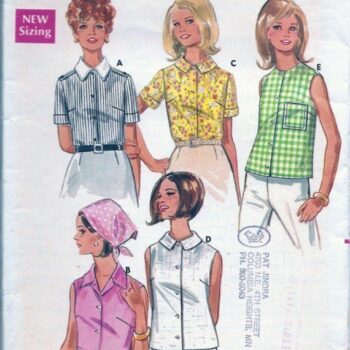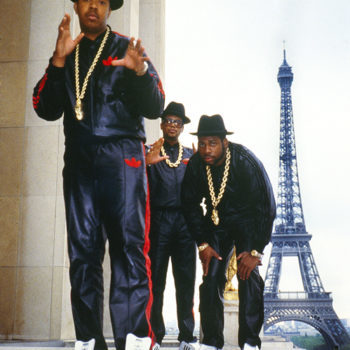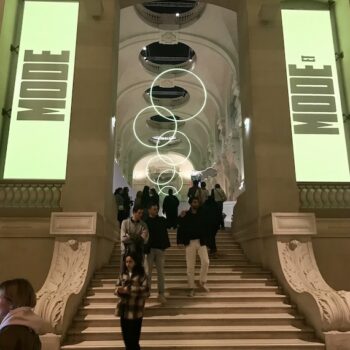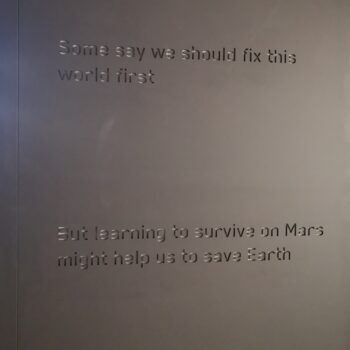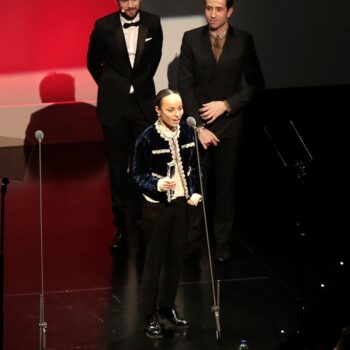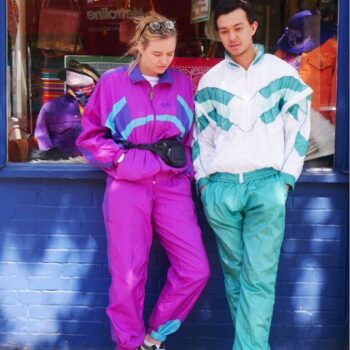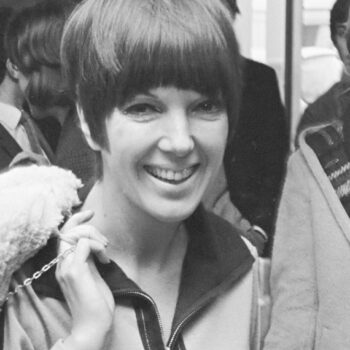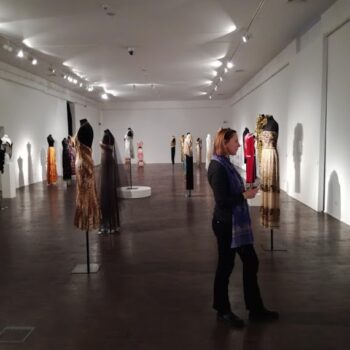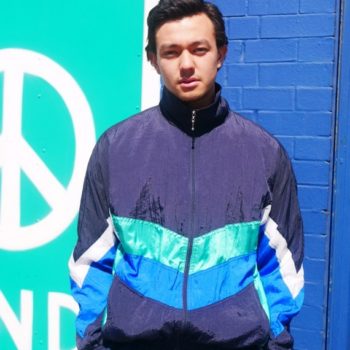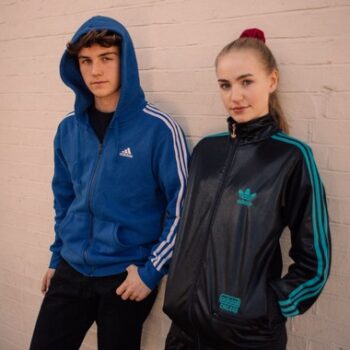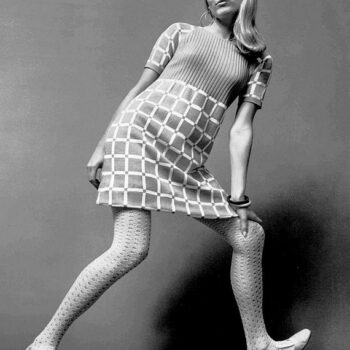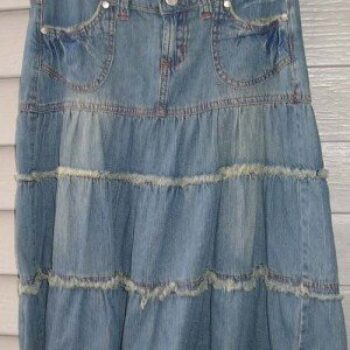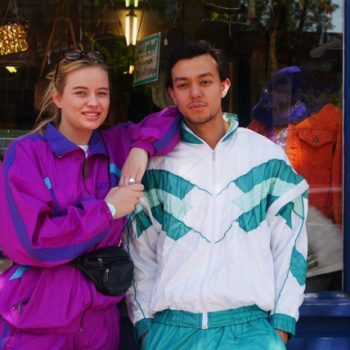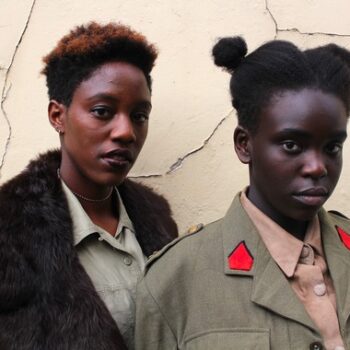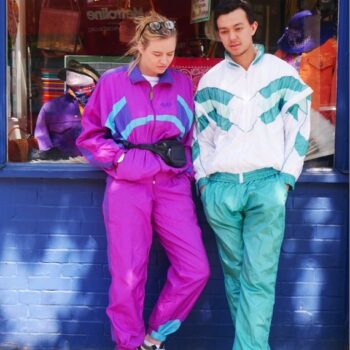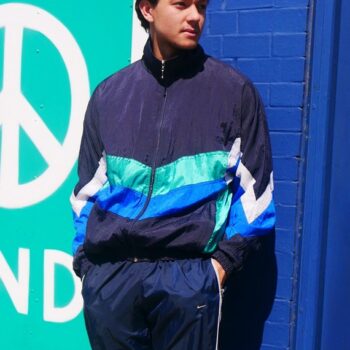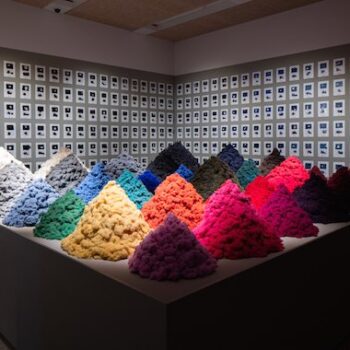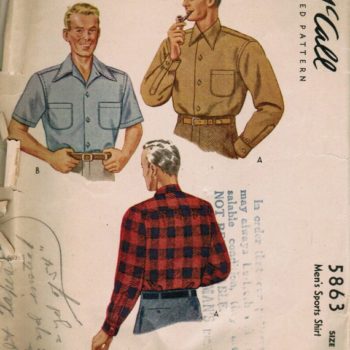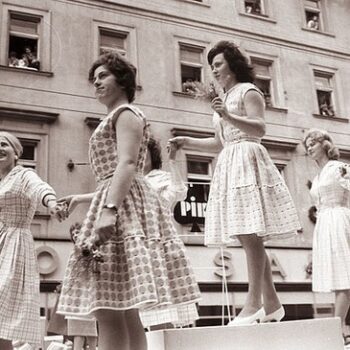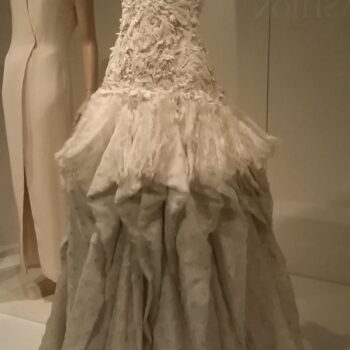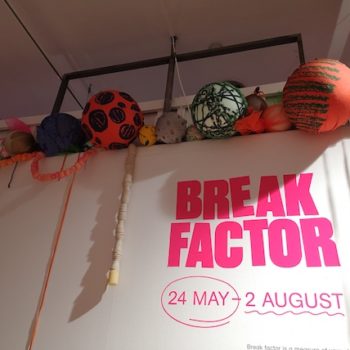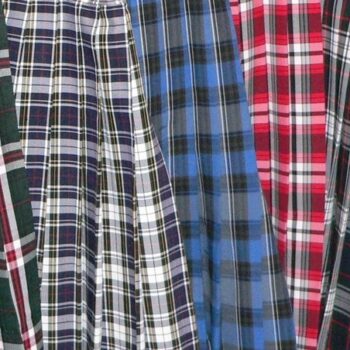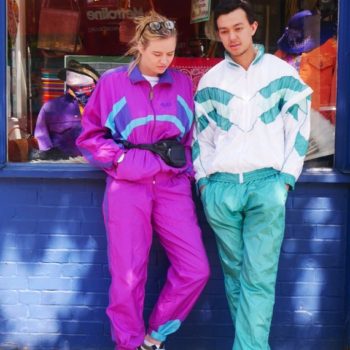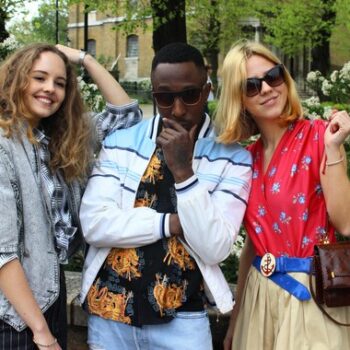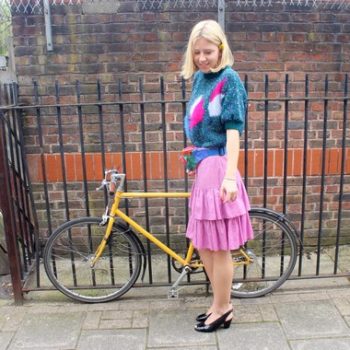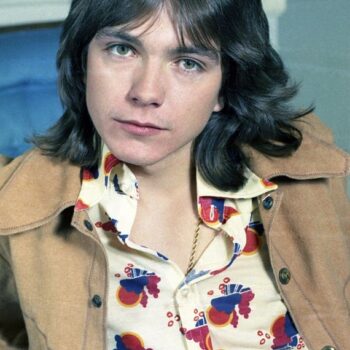You Say You Want a Revolution
October 14, 2016You Say You Want a Revolution – Records and Rebels 1966 – 1970 is the V & A Museum’s blockbuster winter show. It’s a big exhibition, with timed tickets and assistants so busy on a weekend that their hands shake with hurrying as they stuff the headphones into the audioguide that is automatically provided to enhance your experience. But is as groovy as we’ve all heard?
You Say You Want a Revolution – Records and Rebels 1966 – Review
Well, I think it’s fair to say about the You Say You Want a Revolution exhibition that its main appeal lies for those who were there in the 1960s. Baby-boomers were out in force this weekend, and because they seemed to forget they had their headphones on, had abandoned the unspoken injunction to whisper at museums and were loudly exclaiming “Ooh, I used to have one of these! Black velvet it was!” or, perhaps more flamboyantly, “Jane Fonda! Yes, she was GREAT fun to hang out with.”
I could hear their comments so clearly because I had taken my own headphones off. The devices, which played appropriate music or the soundtrack to video clips as you passed by but I found the sound jarring as it switched back and forth, though it seemed I was in the minority as most of the audience seem to keep their headphones on.
You Say You Want a Revolution is also a good, quite thorough show for those interested in 1960s fashion of the period and though it isn’t specifically a fashion show, it does include a lot of outfits and sixties fashion imagery in among record sleeves, posters, guitars, pamphlets and other ephemera. This really helps to put the fashion into the context of its times.
All the revolutions
The Beatles in their mop top era suits
The You Say You Want a Revolution exhibition is divided up into sections, covering various “Revolutions” of the period: youth revolution, revolution in the street, revolution in consumerism, revolution in living and in communicating. Each section looks as if it were designed by an entirely different team, but the different sections work together as a whole.
The opening section is very 60s fashion based, covering early Beatles, with one of John Lennon’s “Moptop” era suits – and it’s a lovely suit. A very narrow silhouette, very high neckline and small, neat lapels. Aside from the shirt collar, which is high, with long collar tips, it would fit in with fashion today.
The label points out that previous to this, the Beatles were wearing the standard Rock n Roll leather jackets and jeans, a real greaser look, and Brian Epstein, their manager, got them into suits to make them more acceptable to the general public. It also contrasted them with the loucher Rolling Stones. The strategy worked, as this was the start of the Beatles main stream popularity.
There’s also a pair of John Lennon’s little round glasses and – here’s a tidbit I didn’t know – apparently they were NHS ones, the sort that were universally uncool. But for John, they became his signature style and he stayed with them for long after he could have got far more fashionable ones.
You Say You Want a Revolution – Youthquake
A classic Twiggy photo from the 1960s
According to Diana Vreeland, writing in Vogue in 1965, there was a whole new movement of people, starting at age 13 and ending at age 24, “Dreamers… Doers. Here. Now. Youthquake 1965”. Twiggy was only 16 when she rose to prominence at that time, and there are some classic photos of her and a mannequin that accurately represents not only her large eyes but also her characteristic stoop.
Twiggy’s favourite designers were Foale and Tuffin and Mary Quant, both well represented here. What really strikes me is that these clothes, so shocking, so revolutionary at the time, are so very neat, well made and really lady-like.
The skirt suit from Mary Quant may feature a mini skirt, but it is only just above the knee and it’s a SUIT. Not a bathing suit, a well tailored neat skirt suit that may have an exaggerated flower pattern on it in blue and white, but it’s a William Morris design. Can’t get much more classic than that. The famous Foale and Tuffin Double D Dress is also immaculately constructed, with the titular D inset, not appliquéd on.
Multicoloured suits
In fact, that’s the funny thing to see as you move around the exhibition – even as it approached the hippy era of the Seventies, the majority of men’s clothes were suits, or at least featured a suit jacket, even the rock stars. The Beatle’s Sergeant Pepper’s Lonely Heart’s Club band costumes are here – in lovely lime green and salmon pink silk, with heavy silver braiding, they are again immaculately made. And though subverting a traditional red and gold guardsman’s woollen uniform into this gaily coloured satin is genuinely innovative, still, it’s a suit.
In the same display case is George Harrison’s purple frock coat, made from purple paisley velvet, and a white suit of John Lennon’s from his White Period. The Sgt Peppers zaniness allowed the Beatles to break away from their clean cut image, ad after that they changed their appearance on a regular basis. That’s right, I mentioned the Beatles again. You Say You Want a Revolution is ostensibly sponsored by Levi’s, but, as even the title is taken from a Beatles track, I have my suspicions. There’s a lot of the Beatles about here, and only two pairs of Levi’s that I noticed. Hmm, it’s a conspiracy man!
You Say You Want a Revolution – Conspiracies
Alan Aldridge designed this revolution
Conspiracy theory was covered in You Say You Want a Revolution of course, as was the heavy LSD usage with some great flouro posters and intricate Alan Aldridge designs. He was the originator of the style that every stoned boy in their bedroom still tries to imitate, but I’ve never seen one amateur who can compete.
In an era before computers, it’s hard to conceive of how perfect his airbrushed and cut out designs were, and I think it’s worth going just to see his originals that are on display here.
Gay Rights and Black Panthers
Hibiscus from the 1960s and 1970s band the Cockettes
There was a good (small) section on gay rights, with the Stonewall riots being in 1969, including one of Dusty Springfield’s spangly dresses, which I assumed was a bit of a tacky nod to drag queens from the Sixties right up until the present day dressing up as her but was actually a reference to her own closeted homosexuality.
A section on the Black Panthers and their “uniform” of black leather jacket, black skirt or trousers, black beret and powder blue shirt is informative, and the uniforms of the French Compagnies Republicaines de Securite (the French government riot control forces), a Washington guardsman and the US soldiers of the Vietnam war introduce the sense of menace that the world was objecting to.
Consumerist and Space Age
Then we have the consumerist age, with its Campbell’s Soup paper dress, yours for only two soup can labels, and its Pan-Am flight hostess suit.
The Sixties Space Age follows, and here, of course, in a clean white room are Paco Rabanne of and Pierre Cardin. One magazine’s comment on their designs comes a surprise in itself: “Cardin’s contribution to modern living may be practical but it’s rather a shock.” I’m not sure where the practicality comes in… The Space Age was so-called because everyone was so excited about the moon landings in 1969. Here’s an actual astronaut suit, in the silver and white that so inspired the fashion designers. I like its many practical pockets and its practical pee-flap.
You Say You Want a Revolution – Enter the Hippies
Suddenly the exhibition space opens out into the great double height room that the V&A have used to such great effect before, and on the walls is projected Jimi Hendrix at Woodstock whilst on the floor is fake grass and beanbags. Visitors are invited to lounge, and they take full advantage. Around the walls are costumes of performers on mannequins, kaftans and capes, snakeskin suits, patchwork jeans and a very strange fur and embroidery jacket by Bill Gibb line up alongside Ossie Clark’s translucent silk chiffon blouses for men.
There is a mention of somebody liking to mix it up by shopping at Alfie’s Antique Market with clothes from the 1920s and 1930s mixed in with contemporary ones. The information notes that it was a period of cross-cultural, cross-continental and cross-era dressing.
The only note of what could be called the cross gender dressing of the era, when men wore traditionally feminine fabrics and treatments, like Ossie’s floaty silk blouse, velvet and ruffles, was earlier on where David Bowie in his “Man Dress” by Mr Fish is filed in the “Gay” section, whereas the resolutely heterosexual Mick Jagger wore a similar Mr Fish creation in 1969 too. Men of all sexualities were enjoying peacocking about, but I didn’t see this touched on.
Solidarity or cultural appropriation?
Suede fringing was much in evidence, and under a buckskin shirt and tattered top hat with large feather, (worn to festivals in 1966), it was noted that “Native American clothing became popular with the yet to be named hippies to indicate openness and empathy with marginalised communities”. Which is interesting because today, wearing the clothes, hairstyles or accessories traditionally worn by a different culture, for example dreadlocks or Native American headdresses is seen as offensive, not a gesture of solidarity.
Overall this is a thoughtful exhibition, one that doubtless take a lot of people back and cover the sixties in, if what is not exactly a fresh new light, a fairly thorough style.
You Say You Want a Revolution – Records and Rebels 1966 – 1970 is on at the V & A Museum until 26th Feb 2017



